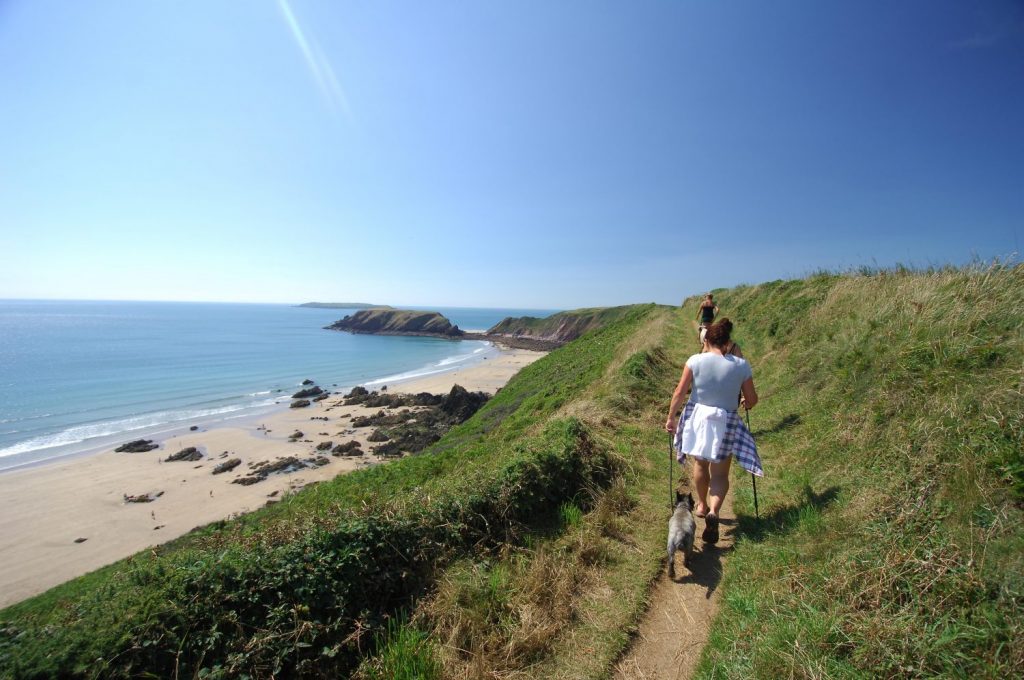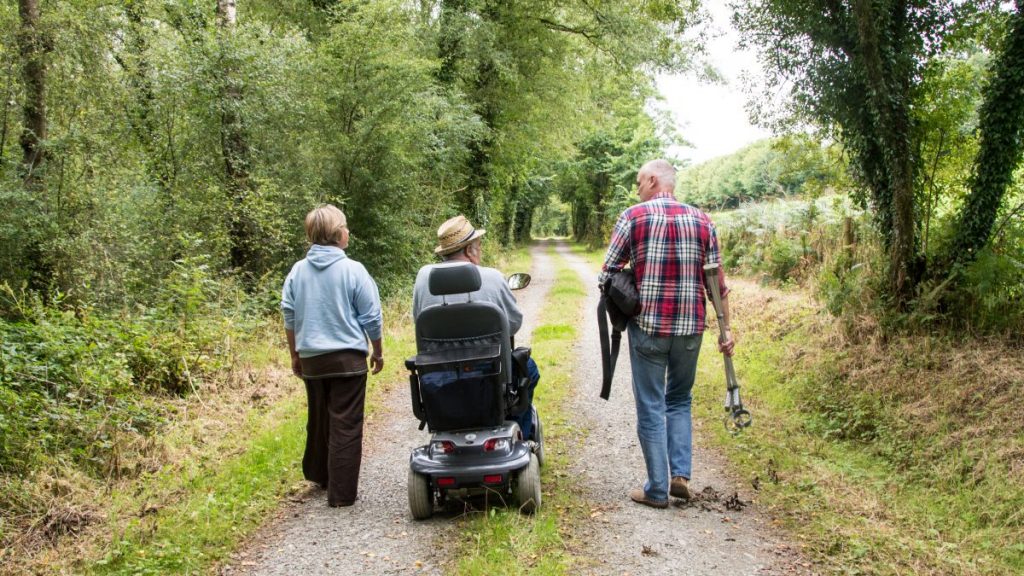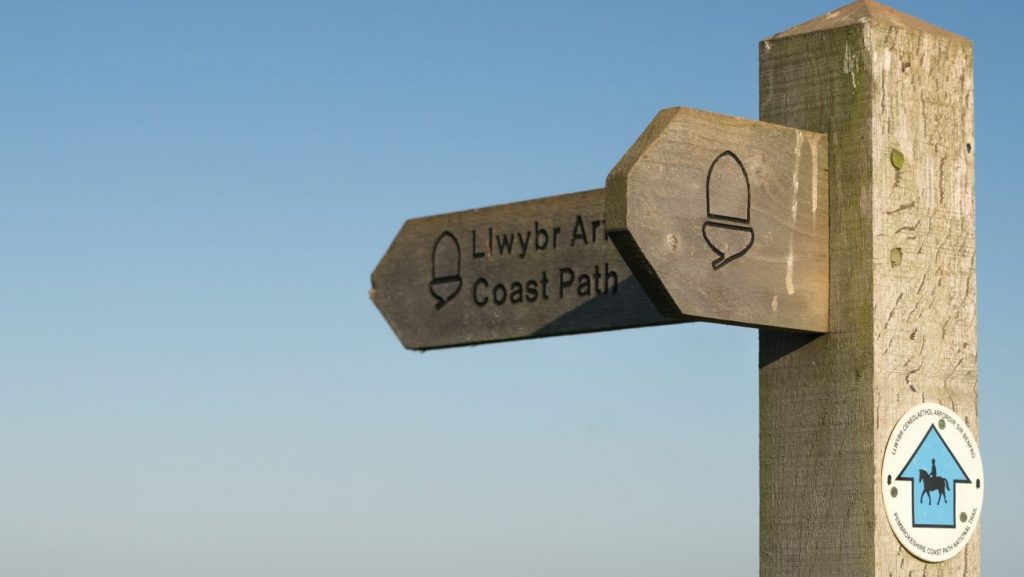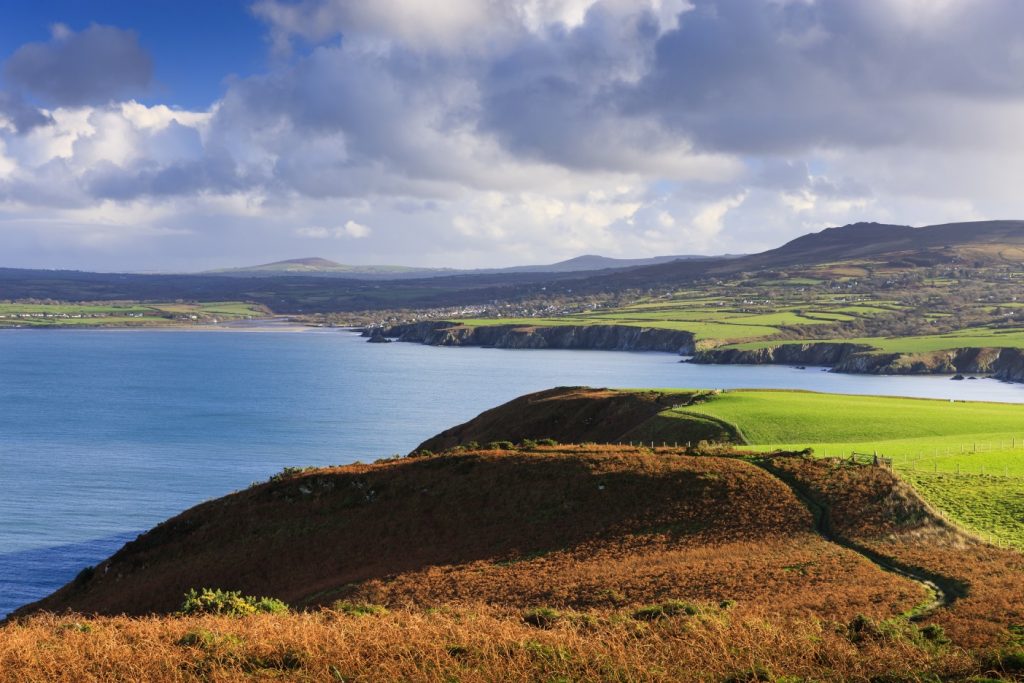DISTANCE/DURATION:
WOODLAND WALK (green) 0.9 miles (1.4km) 30 minutes
LIGHTHOUSE WALK (blue) 1.4 miles (2.3km) 45 minutes
WEST CLIFFS WALK (red) 1.9 miles (3.1km) 1 hour
PUBLIC TRANSPORT: Please telephone Tenby Tourist Information Centre 01437 775603 for details of buses and trains, car parks, park & ride
CHARACTER: Island walk, easy grade
LOOK OUT FOR: Spectacular natural views, lighthouse, perfumery,St Illtud’s church, Monastery buildings (enclosure private – no access), spring flowers, seals
CAUTION: Dogs allowed on island, but must be kept on a lead at all times. Please telephone Tenby harbour (01834 842296) for boat crossing days/times etc.
On a hot summer’s afternoon, when the air is buzzing with bees busy at comfrey flowers, there is nowhere quite like Caldey Island. The place has a relaxed, slow paced atmosphere.
Just a 20 minute boat trip from Tenby, the island is a great place for a gentle stroll and there is lots to explore. The island has a long history; its caves were inhabited from Stone Age times, but it was the arrival of the 6th century hermit St Pyro that began Caldey’s long connection with the church.
In Welsh the island is known as Ynys Byr, or Pyro’s Island. The name Caldey was given by the Vikings and means Cold Island. After the Norman conquest, Benedictine monks established a priory on Caldey.
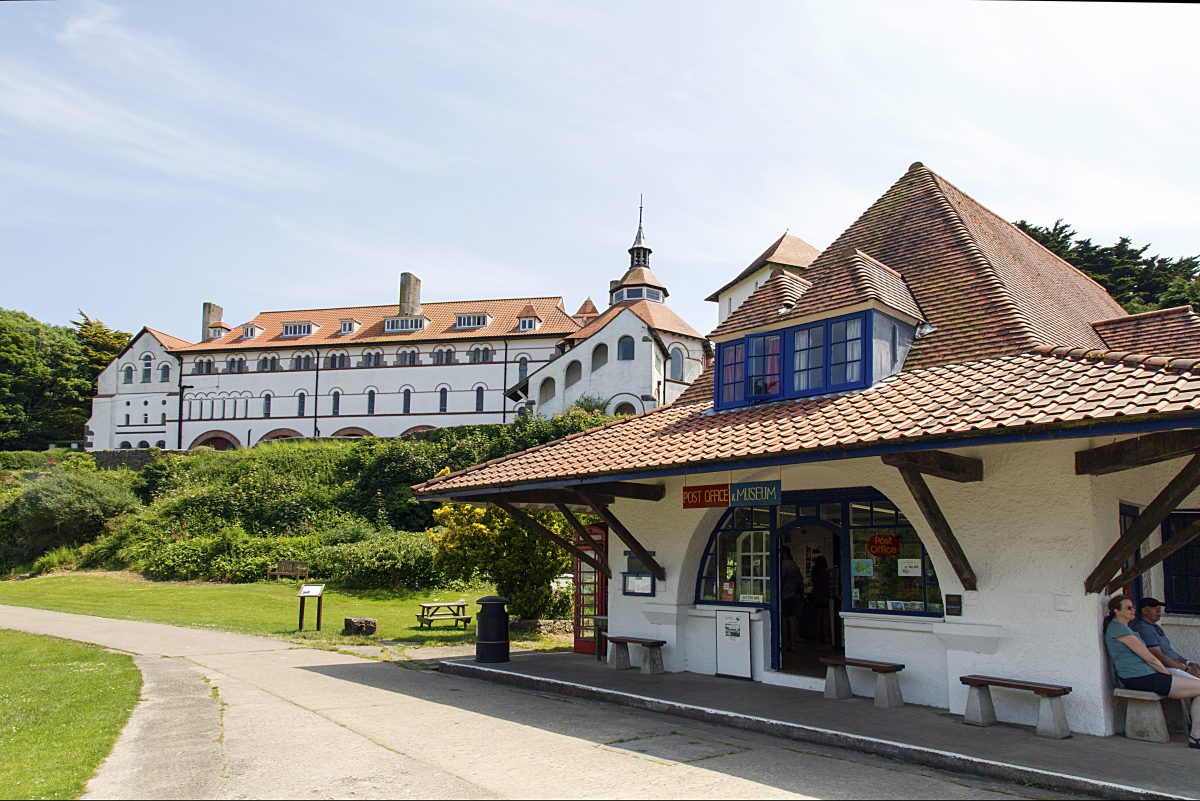
After the reformation the island changed hands repeatedly, but in 1906 it once again became home to a Benedictine order.
They built the Mediterranean-style monastery, but in 1928 the island was sold once again to a Cistercian order. It is still a working monastic community.
Much of the route runs along field edges, woodland and cliffs, where there are plenty of birds to see. The atmospheric Old Priory, which stands close to the route among trees, is one of the oldest churches in Wales.
For such a small island Caldey has a wide variety of habitats. Its geology gives it something of a split personality as part of the island is Old Red Sandstone and part is Carboniferous limestone. As a result it has both acid and alkaline soils, which produce a glorious array of flowers.
Some may thrive today thanks partly to the care of medieval monks. For example, comfrey is sometimes called knitbone because it was used to treat broken bones by herbalists.
Find this Walk
Grid ref: SS140965
SAFETY FIRST!
- Take great care when on the Coast Path
- Stay on the path and away from cliff edges
- Wear boots and warm, waterproof clothing
- Take extra care in windy and/or wet conditions
- Always supervise children and dogs
- Leave gates and property as you find them
